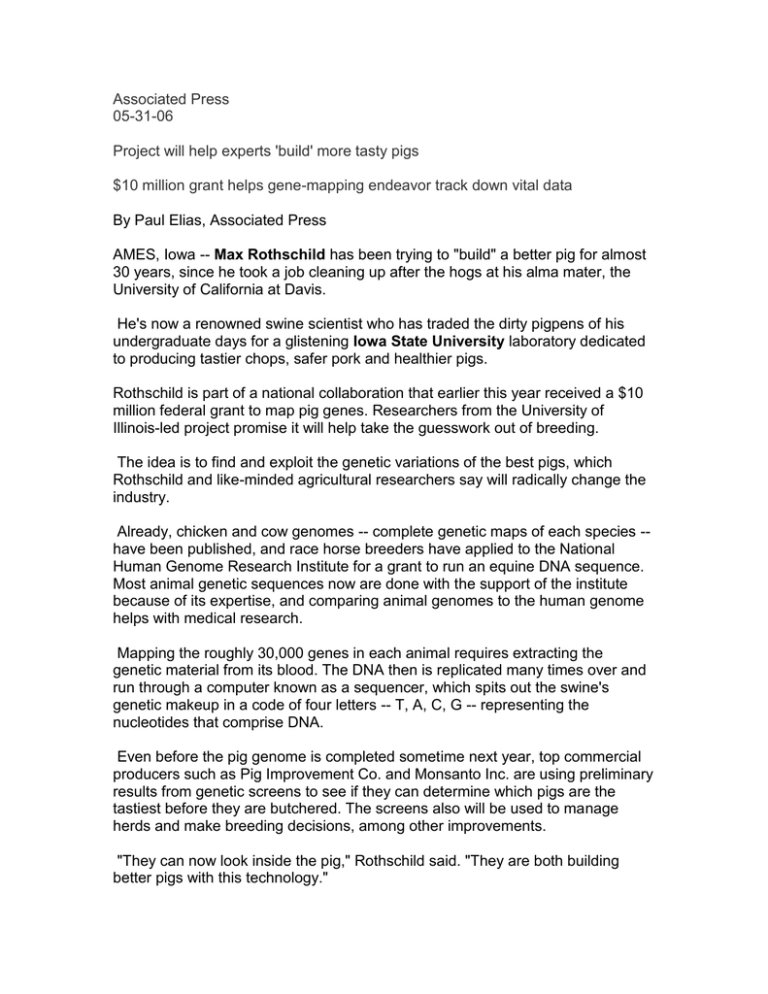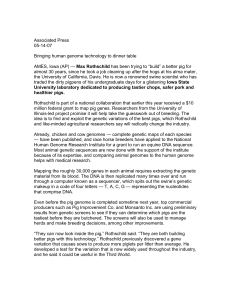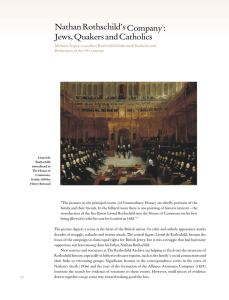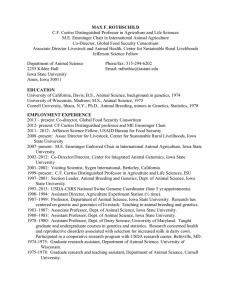Associated Press 05-31-06 Project will help experts 'build' more tasty pigs
advertisement

Associated Press 05-31-06 Project will help experts 'build' more tasty pigs $10 million grant helps gene-mapping endeavor track down vital data By Paul Elias, Associated Press AMES, Iowa -- Max Rothschild has been trying to "build" a better pig for almost 30 years, since he took a job cleaning up after the hogs at his alma mater, the University of California at Davis. He's now a renowned swine scientist who has traded the dirty pigpens of his undergraduate days for a glistening Iowa State University laboratory dedicated to producing tastier chops, safer pork and healthier pigs. Rothschild is part of a national collaboration that earlier this year received a $10 million federal grant to map pig genes. Researchers from the University of Illinois-led project promise it will help take the guesswork out of breeding. The idea is to find and exploit the genetic variations of the best pigs, which Rothschild and like-minded agricultural researchers say will radically change the industry. Already, chicken and cow genomes -- complete genetic maps of each species -have been published, and race horse breeders have applied to the National Human Genome Research Institute for a grant to run an equine DNA sequence. Most animal genetic sequences now are done with the support of the institute because of its expertise, and comparing animal genomes to the human genome helps with medical research. Mapping the roughly 30,000 genes in each animal requires extracting the genetic material from its blood. The DNA then is replicated many times over and run through a computer known as a sequencer, which spits out the swine's genetic makeup in a code of four letters -- T, A, C, G -- representing the nucleotides that comprise DNA. Even before the pig genome is completed sometime next year, top commercial producers such as Pig Improvement Co. and Monsanto Inc. are using preliminary results from genetic screens to see if they can determine which pigs are the tastiest before they are butchered. The screens also will be used to manage herds and make breeding decisions, among other improvements. "They can now look inside the pig," Rothschild said. "They are both building better pigs with this technology." Rothschild previously discovered a gene variation that causes sows to produce more piglets per litter than average. He developed a test for the variation that now is widely used throughout the industry, and he said it could be useful in the Third World. "The developing world wants to eat meat," Rothschild said. "And there's only one way to produce it -- grow more animals."









